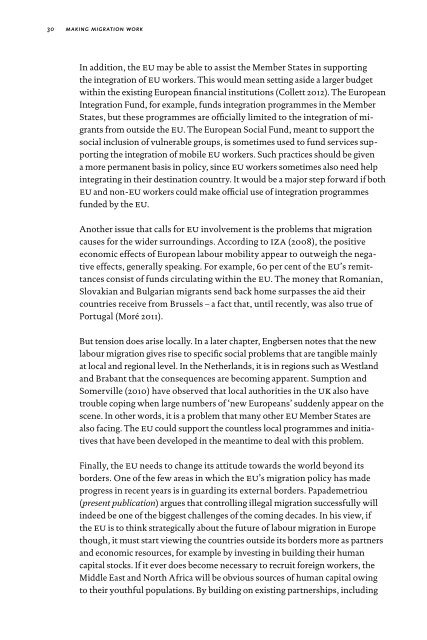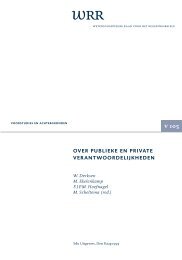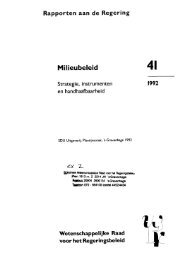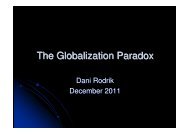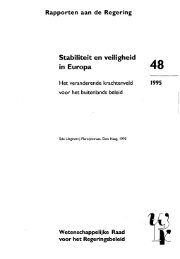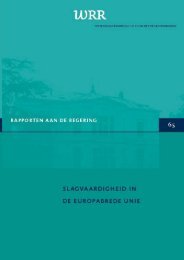Making Migration Work - Wetenschappelijke Raad voor het ...
Making Migration Work - Wetenschappelijke Raad voor het ...
Making Migration Work - Wetenschappelijke Raad voor het ...
- No tags were found...
You also want an ePaper? Increase the reach of your titles
YUMPU automatically turns print PDFs into web optimized ePapers that Google loves.
30making migration workIn addition, the eu may be able to assist the Member States in supportingthe integration of eu workers. This would mean setting aside a larger budgetwithin the existing European financial institutions (Collett 2012). The EuropeanIntegration Fund, for example, funds integration programmes in the MemberStates, but these programmes are officially limited to the integration of migrantsfrom outside the eu. The European Social Fund, meant to support thesocial inclusion of vulnerable groups, is sometimes used to fund services supportingthe integration of mobile eu workers. Such practices should be givena more permanent basis in policy, since eu workers sometimes also need helpintegrating in their destination country. It would be a major step forward if botheu and non-eu workers could make official use of integration programmesfunded by the eu.Another issue that calls for eu involvement is the problems that migrationcauses for the wider surroundings. According to iza (2008), the positiveeconomic effects of European labour mobility appear to outweigh the negativeeffects, generally speaking. For example, 60 per cent of the eu’s remittancesconsist of funds circulating within the eu. The money that Romanian,Slovakian and Bulgarian migrants send back home surpasses the aid theircountries receive from Brussels – a fact that, until recently, was also true ofPortugal (Moré 2011).But tension does arise locally. In a later chapter, Engbersen notes that the newlabour migration gives rise to specific social problems that are tangible mainlyat local and regional level. In the Netherlands, it is in regions such as Westlandand Brabant that the consequences are becoming apparent. Sumption andSomerville (2010) have observed that local authorities in the uk also havetrouble coping when large numbers of ‘new Europeans’ suddenly appear on thescene. In other words, it is a problem that many other eu Member States arealso facing. The eu could support the countless local programmes and initiativesthat have been developed in the meantime to deal with this problem.Finally, the eu needs to change its attitude towards the world beyond itsborders. One of the few areas in which the eu’s migration policy has madeprogress in recent years is in guarding its external borders. Papademetriou(present publication) argues that controlling illegal migration successfully willindeed be one of the biggest challenges of the coming decades. In his view, ifthe eu is to think strategically about the future of labour migration in Europethough, it must start viewing the countries outside its borders more as partnersand economic resources, for example by investing in building their humancapital stocks. If it ever does become necessary to recruit foreign workers, theMiddle East and North Africa will be obvious sources of human capital owingto their youthful populations. By building on existing partnerships, including


